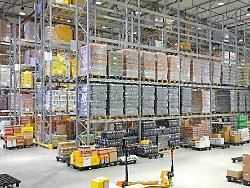Monday, July 12, 2021
The risk of inflation is growing
Wholesale prices are rising like in the oil crisis
The last time there was such an increase was during the second oil crisis at the beginning of the 1980s: Wholesale prices recorded an increase of more than ten percent compared to the same month last year. Is inflation rising in Germany?
Wholesale sales prices rose more sharply in June than they have been in almost 40 years. As the Federal Statistical Office announced, wholesale prices rose by 10.7 percent compared to June 2020. An even higher change in the previous year had therefore last occurred in October 1981 as a result of the second oil crisis – at that time prices rose by 11 percent compared to the same month last year.
According to the Federal Office, the high rate of increase is partly due to the so-called base effect. Because in June 2020, the same month last year, the price level was very low due to the Corona crisis – the increase is correspondingly high in comparison. But even compared to the previous month of May 2021, wholesale sales prices continued to rise, increasing by 1.5 percent in June.
Wholesaling is something like the hinge between manufacturers and consumers. If suppliers and producers turn the price screw, wholesalers are also tempted to pass on higher costs to customers. So it can be seen very early whether Germany is importing inflation.
According to statistics, the greatest influence on the rate of change in the wholesale price index compared to the same month of the previous year was the price increase in wholesale petroleum products (plus 37.7 percent). There were also particularly strong price increases compared to the previous year in the wholesale trade for scrap and residual materials with a plus of 77.6 percent and for ores, metals and semi-finished metal products (plus 54.2 percent).
Raw and sawn timber (plus 48.4 percent) as well as grain, raw tobacco, seeds and animal feed (plus 26.9 percent) were also considerably more expensive than in the previous year. According to statistics, prices in the wholesale trade for data processing equipment and software (minus 3.7 percent) and for fish and fish products (minus 1.2 percent) were lower than in June 2020.
Inflation rate falls slightly in June
The inflation rate in Germany has been rising month by month since the beginning of the year – but in June it fell slightly again for the first time. The price increase was 2.3 percent compared to the same month last year, as the Federal Statistical Office announced at the end of June according to preliminary results. In May the inflation rate was 2.5 percent. However, after the slight decline in June, experts expect inflation to rise again.
According to financial experts, however, it is unlikely that the slight relaxation will continue. It is “not at all certain that this short-term inflation will disappear as quickly as it came,” explained Friedrich Heinemann from the Center for European Economic Research in Mannheim.
Jens-Oliver Niklasch from the Landesbank Baden-Württemberg also sees the slightly lower inflation rate in June only as a “small respite in the rise to the inflation peak”. Inflation will remain an issue until at least the end of the year, and from September he expects an inflation rate of over three percent. The risk of long-term inflation continues to grow, warned Niklasch.
.
